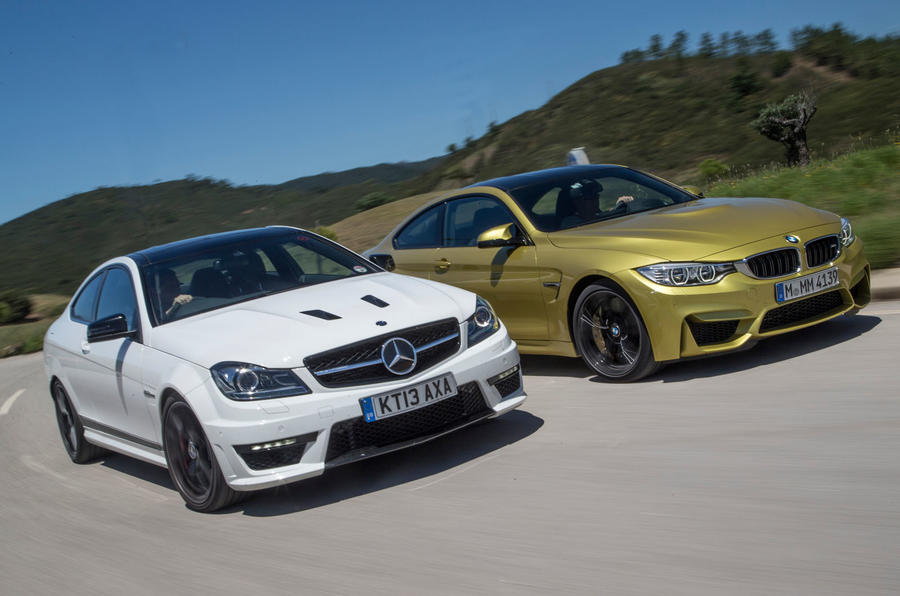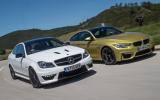If the new, fifth-generation BMW M4 has any chance whatsoever of being remembered as one of the great M cars, then it will need to step up, right from the word go, and face the mighty but no longer cutting-edge Mercedes-Benz C63 AMG.
Because if the new twin-turbocharged M4 can’t level with the big-hearted but now seven-year-old C63 on broadly equal terms, it will surely be classed – in M car terms, at least – as a dud.
We ruin a set of tyres putting the BMW M4 through its paces
But before we delve any deeper into the nitty-gritty of how the £56,635 M4 stacks up beside the £57k C63 – tested here in rather more expensive 507 limited-edition guise, costing more than £67k – what’s the difference between the new M4 and its more familiar-sounding cousin, the latest M3? And what does it bring to the table with which to counteract the raw potency of the C63 AMG?
New BMW M3 vs M4
From the ground up, this F60-model M4 is – just like its mechanically identical four-door brother, the M3 – a brand-new car. New engine, new chassis, new gearbox, new brakes – a new era in the history of the most popular M car, indeed, with a suitably impressive set of on-paper credentials to match.
The headline improvements are myriad and focus mostly around the car’s extensive use of new lightweight materials, including carbonfibre-reinforced plastic, to exact a weight reduction of approximately 80kg compared with the V8 M3. That’s a big step in a good direction, and it means that just about everything else on the car gets a decent head start.
Having said that, BMW has, of course, also improved most other aspects of the car, so the twin-turbo straight six engine produces a small amount more power than the V8 – 425bhp versus 421bhp – and a huge hit of extra torque, which rises from 295lb ft to a thumping 406lb ft, all of which is developed between 1850rpm and 5500rpm. And because there’s less weight to haul around, the leaps in both power-to-weight and torque-to-weight ratios are even more dramatic than you might think.
Watch Autocar's BMW M3 video review
The chassis, steering, brakes and suspension have also been designed and engineered to a level that is well beyond anything previously seen in the M3. The rear subframe is now solidly mounted to the body and is one of the few major components on the car still to be made from steel, while the aluminium front subframe is aided in its quest to create stiffness by a full carbonfibre strut brace.
And although the basic suspension design remains as before, with struts at the front and a multi-link axle at the rear, the attention to detail within that familiar design is unprecedented.























































Join the debate
Add your comment
Meanwhile in the real world,
The way things are going
It's good to see that BMW have still managed to produce a compelling drivers car despite this caveat - if you view turbocharging as an issue. I'm sure the next Merc C63 (or however they badge it) will be equally as good, but suffer from this same "flaw".
I have to wonder, though, if this doesn't make for an easier to live with, more everyday car, than one with a screaming NA V8. If I can afford an M3/M4 it would be my only car, and the vast amount of my time in it would be spent pootling around town - precious little would be the type of back-roads blasts that these sort of reviews tend to focus on.
A bit like having a car that can do 150 mph +, you'll never use it the way that the reviewers do (or maybe just occasionally on a track), but it's nice to know that you could if you wanted to.
AMG for me